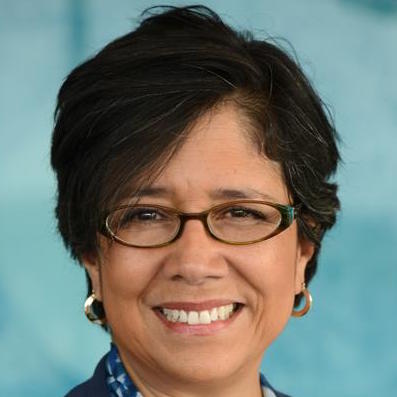Sandra Luna-Fineman, MD, treats children and adolescents with cancer from around the U.S. in her role as a pediatric oncologist at Children’s Hospital Colorado, but she knows that children in low- and middle-income countries around the world need her help the most.
In 1999, Luna-Fineman — now a CU Cancer Center investigator and an associate professor in the CU School of Medicine — helped establish a pediatric cancer center in her native Guatemala; later, as a consultant with St. Jude’s Children’s Hospital, she developed the retinoblastoma and Hodgkin committees and treatment modules for the Central American Pediatric Hematology/Oncology Association and helped establish multidisciplinary care guidelines and practices for childhood cancer in Central America, the Dominican Republic, and Haiti.
As part of her latest effort to increase survivorship of childhood cancers in low- and middle-income countries, Luna-Fineman spent the past two years helping to create the Global Initiative for Childhood Cancer (GICC), a World Health Organization (WHO) framework for fighting childhood cancer. The 126-page document lays out the troubling statistics — more than 10,000 children are diagnosed with cancer each day, and the survival rate is between 15% and 45% in low- and middle-income countries, as opposed to 80% in high-income countries — as well as the reasons for the inequity and what policymakers in those countries can do to implement childhood cancer services.
Explaining inequities and challenges
“There are several reasons for the inequity,” Luna-Fineman says. “One is late diagnosis, or lack of diagnosis. A lot of these countries don’t have the infrastructure for services like pathology, radiology, or radiation therapy. So if early diagnosis cannot be done, how do you implement childhood cancer services in a low- or middle-income country? You have to start little by little, and as a center or country gets more sophisticated, they can improve pathology, improve imaging, improve the complexity of treatment used.”
A distinctive challenge of childhood cancers, Luna-Fineman says, is that they are rare and most often start in very immature cells, meaning there is no known environmental or behavioral cause and no way to prevent them, as can be done in adult cancer. Also, childhood cancers are very different from those in adulthood.
“To give you an example, colon cancer has many mutated genes, while most childhood cancers have a small number of genetic abnormalities that cause the cancer,” she says.
A CUREAll to cure all
The WHO’s “CUREAll” framework for fighting childhood cancer looks to increase the capacity of countries to provide quality services for children with cancer and to increase prioritization of childhood cancer at the global and national levels. CUREAll is an acronym emphasizing the importance of Centers of excellence; Universal health coverage; Regimens and standards of care; and Evaluation and monitoring, all supported by Advocacy, Leveraging financial assistance to help families through treatment, and Linked governance. The document Luna-Fineman helped to create is a guide for policymakers on how to institute the framework in their own countries.
“I’m not a public health person; what I am is a pediatric oncologist with a lot of knowledge of how it’s done, and what works and what doesn’t work,” Luna-Fineman says. “I was charged with creating a document that shows what really needs to be done in the country to be able to push this forward.”
The WHO chose six “tracer cancers” for implementing programs and monitoring progress in childhood cancers worldwide, and the document lays out the justification for the selection of each: acute lymphoblastic leukemia because it is the most common childhood cancer, for instance; retinoblastoma because it combines specialties to partner on early diagnosis.
“Ophthalmologists have to work with the oncologist on how to address the eye tumor, diagnosing early to save lives, save vision, and save eyes,” Luna-Fineman says. “The reason we chose these six index cancers is because not only are they very curable without complex therapy, but focusing on these actually will make the local medical and paramedical teams grow in a way that they can, later on, treat other types of childhood cancer.”
Changing the face of childhood cancer
The document also addresses the importance of psychosocial support, education, and nutrition when it comes to surviving and living with childhood cancers, as well as the social, emotional, and economic impacts of childhood cancer on the families.
It includes guidelines on implementing the CUREAll framework, including such steps as assessment, planning, and monitoring.
“Now that this is written, we can give it to policymakers in each country: ‘Here is how you do it; if you need help, we want to help you,’” Luna-Fineman says. “The WHO can offer help to most countries, forming partnerships to train medical providers, nurses, pathologists, radiation therapists, and so forth.
“This is going to change the face of childhood cancer,” she continues. “We have 28 countries that are already running the WHO GICC, using the CUREAll framework. By the end of 2022 we’ll have 50, and by the end of 2023 we'll have 100 countries participating. The aim is that by 2030, 60% of all kids around the world are surviving childhood cancer.”




.png)